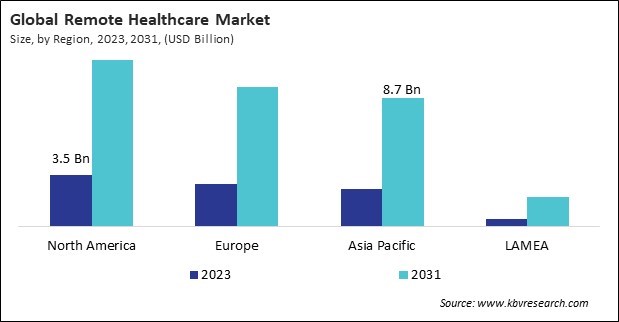According to a new report, published by KBV research, The Global Remote Healthcare Market size is expected to reach $31.4 billion by 2031, rising at a market growth of 16.6% CAGR during the forecast period.
The Tele-ICU segment is leading the Global Remote Healthcare Market by Service in 2023; thereby, achieving a market value of $12.9 billion by 2031. Tele-ICU allows hospitals and healthcare facilities, especially those in remote or underserved areas, to access specialized critical care expertise without requiring patients to be physically present in a high-acuity setting. This enhances patient care by providing continuous monitoring and expert input from intensivists who might not be available locally.

The Patient segment is anticipating a CAGR of 17.2% during (2024 - 2031). Patients increasingly seek healthcare solutions that fit into their busy lives and provide access to care without the need for travel. Remote healthcare offers the convenience of receiving medical consultations, follow-ups, and monitoring from home, reducing the need for in-person visits. For patients with chronic conditions such as diabetes, hypertension, or heart disease, remote healthcare provides a way to manage their health more effectively. Continuous monitoring and virtual consultations help track symptoms, adjust treatments, and prevent complications.
Full Report: https://www.kbvresearch.com/remote-healthcare-market/
The Asia Pacific region dominated the Global Remote Healthcare Market by Region in 2023, and would continue to be a dominant market till 2031; thereby, achieving a market value of $8,701.4 million by 2031. The Europe region is experiencing a CAGR of 16.4% during (2024 - 2031). Additionally, The North America region would exhibit a CAGR of 16% during (2024 - 2031).
By Service
By End Use
By Geography
 Unique Offerings
Unique Offerings